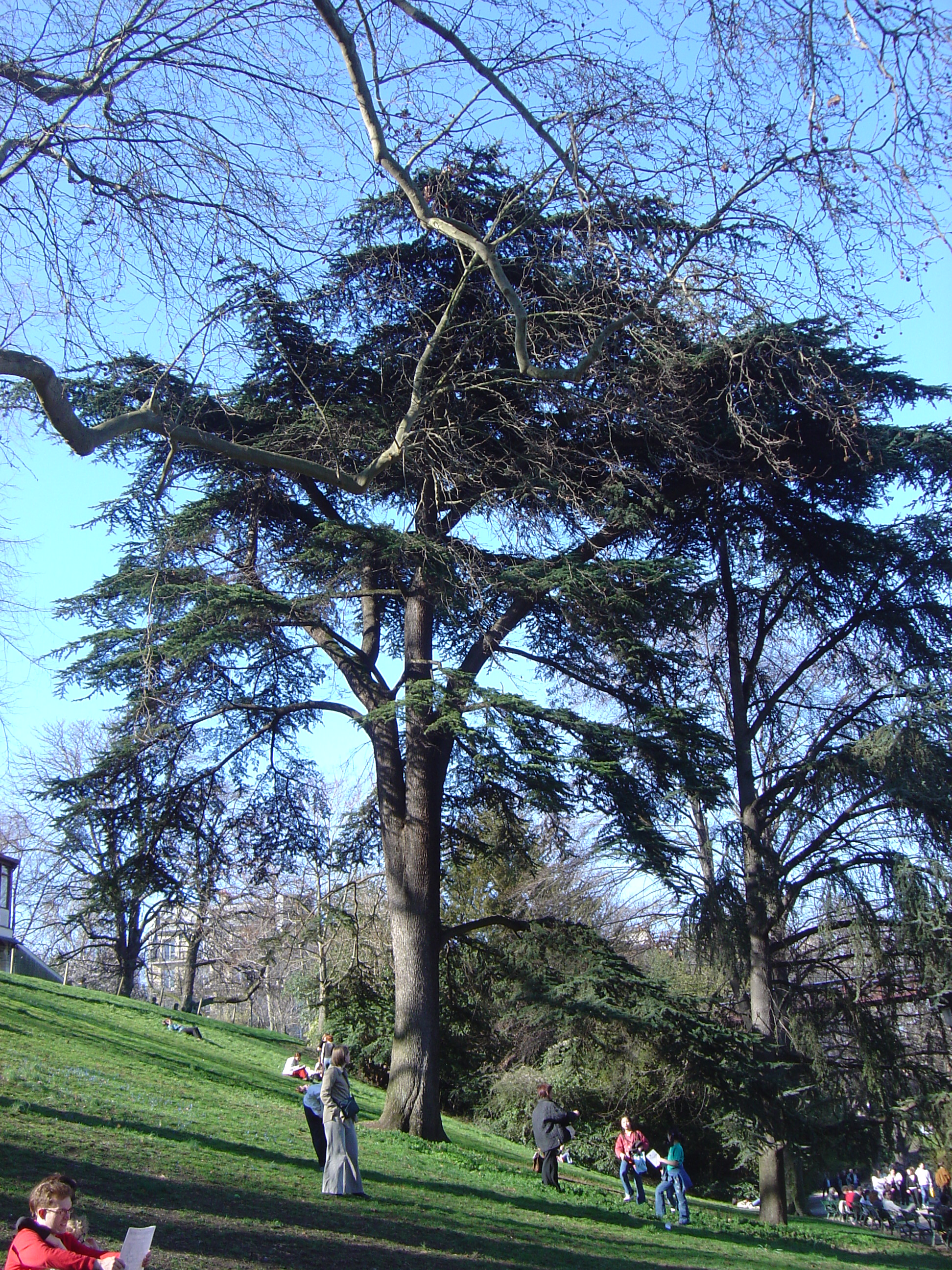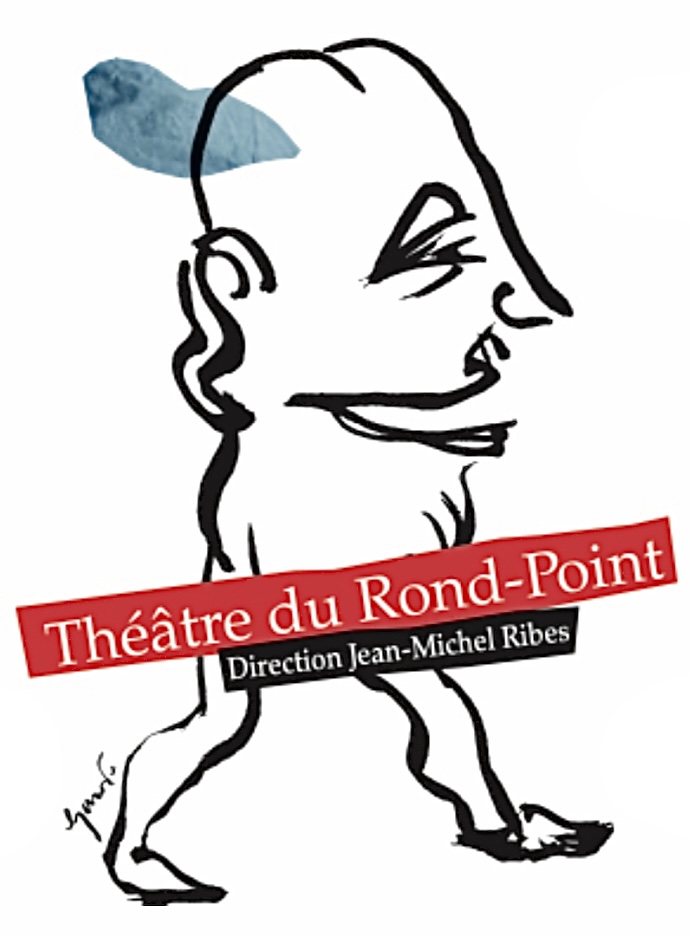|
Gabriel Davioud
Jean-Antoine-Gabriel Davioud (; 30 October 1824 – 6 April 1881) was a French architect. He worked closely with Baron Haussmann on the transformation of Paris under Napoleon III during the Second Empire. Davioud is remembered for his contributions to architecture (e.g. the two theaters on the place du Châtelet and the city hall of the 19th arrondissement), parks (e.g. the Pré Catelan garden and the square des Batignolles) and urban amenities (fountains, pavilions, benches and kiosks). These contributions now form an integral part of the style of Haussmann's Paris. Biography Davioud was born in Paris and studied at the École des Beaux-Arts under Léon Vaudoyer. He won the prestigious Second Grand Prix de Rome. In 1843, he began working in the planning department of the municipal government of Paris. First, he served as an assistant inspector and later was promoted to inspector general for architectural works. In 1855, he became chief architect for the city’s parks and p ... [...More Info...] [...Related Items...] OR: [Wikipedia] [Google] [Baidu] |
French Architect
The following is a chronological list of French architects. Some of their major architectural works are listed after each name. Middle Ages Étienne de Bonneuil (late 13th century) * Uppsala Cathedral, Sweden Jean de Chelles (13th century) * Notre Dame de Paris Pierre de Montreuil (c. 1200–1266) * Notre Dame de Paris * the Abbey of Saint-Germain-des-Prés * Saint Denis Basilica Matthias of Arras (?–1352) * Saint Vitus Cathedral in Prague Villard de Honnecourt (14th century) – architecture plans Pierre d'Angicourt (late 13th century) * Lucera castle Pierre de Chaule (late 13th century) * Castel Nuovo Renaissance to Revolution Jacques I Androuet du Cerceau (c. 1510–c. 1585) *Important book of architectural engravings Philibert Delorme (or De L'Orme) (1510/1515–1570) * Chateau d'Anet (c.1550) – for Diane de Poitiers * Tuileries Palace (1564–1567) Pierre Lescot (1515–1578) * Louvre Palace ( Lescot Wing, 1546) – for Francis I a ... [...More Info...] [...Related Items...] OR: [Wikipedia] [Google] [Baidu] |
Fontaine Saint-Michel
The Fontaine Saint-Michel () is a monumental fountain located in Place Saint-Michel in the 6th arrondissement in Paris. It was constructed in 1858–1860 during the French Second Empire by the architect Gabriel Davioud. It has been listed since 1926 as a ''monument historique'' by the French Ministry of Culture. Fontaine Saint-Michel History The fontaine Saint-Michel was part of the great project for the reconstruction of Paris overseen by Baron Haussmann during the French Second Empire. In 1855 Haussmann completed an enormous new boulevard, originally called boulevard de Sébastopol-rive-gauche, now called Boulevard Saint-Michel, which opened up the small place Pont-Saint-Michel into a much larger space. Haussmann asked the architect of the service of promenades and plantations of the prefecture, Gabriel Davioud, to design a fountain which would be appropriate in scale to the new square. As the architect of the prefecture, he was able to design not only the fountain b ... [...More Info...] [...Related Items...] OR: [Wikipedia] [Google] [Baidu] |
19th Arrondissement Of Paris
The 19th arrondissement of Paris (''XIXe arrondissement'') is one of the 20 arrondissements of the capital city of France. In spoken French, this arrondissement is referred to as ''dix-neuvième''. The arrondissement, known as Butte-Chaumont, is situated on the right bank of the River Seine. It is crossed by two canals, the Canal Saint-Denis and the Canal de l'Ourcq, which meet near the Parc de la Villette. The 19th arrondissement, mixing the Old French bohemianism and also the Parisian cosmopolitanism, includes two public parks: the Parc des Buttes Chaumont, located on a hill, and the Parc de la Villette, which is home to the Cité des Sciences et de l'Industrie, a museum and exhibition centre, the Conservatoire de Paris, one of the most renowned music schools in Europe, the Cabaret Sauvage, the Zénith de Paris and the Philharmonie de Paris, both part of the Cité de la Musique. Geography The land area of the arrondissement is 6.786 km2 (2.62 sq. miles). Demogra ... [...More Info...] [...Related Items...] OR: [Wikipedia] [Google] [Baidu] |
Parc Des Buttes-Chaumont
The Parc des Buttes Chaumont () is a public park situated in northeastern Paris, France, in the 19th arrondissement. Occupying , it is the fifth-largest park in Paris, after the Bois de Vincennes, Bois de Boulogne, Parc de la Villette and Tuileries Garden. Opened in 1867, late in the regime of Napoleon III, it was built according to plans by Jean-Charles Adolphe Alphand, who created all the major parks demanded by the Emperor. The park has of roads and of paths. The most famous feature of the park is the Temple de la Sibylle, inspired by the Temple of Vesta in Tivoli, Italy, and perched at the top of a cliff fifty metres above the waters of the artificial lake. History The park took its name from the bleak hill which occupied the site, which, because of the chemical composition of its soil, was almost bare of vegetation – it was called ''Chauve-mont'', or bare hill. The area, just outside the limits of Paris until the mid-19th century, had a sinister reputation; it ... [...More Info...] [...Related Items...] OR: [Wikipedia] [Google] [Baidu] |
Henri Alfred Jacquemart
Henri Alfred Marie Jacquemart () (24 February 1824, in Paris – 4 January 1896, in Paris), often known as Alfred Jacquemart, was a noted French sculptor and animalier. He usually signed his works: ''A. Jacquemart''. Jacquemart studied under painter Paul Delaroche and sculptor Jean Baptiste Jules Klagmann. He entered the École des Beaux-Arts in 1845. Jacquemart exhibited at the Paris Salon from 1847–1879, receiving medals in 1857, 1863 and 1865. He traveled in Egypt and Turkey, and was commissioned by the city of Alexandria, Egypt, to create a colossal statue of Muhammad Ali of Egypt. He sculpted in large, medium and small scale. Many of his works were cast in bronze by the Val d' Osne foundry and some by the silversmith Christofle. Ultimately, however, he earned his reputation for his many larger animal works. In 1870 Jacquemart became a Chevalier of the Légion d'honneur. Jacquemart died suddenly at his apartment in the Rue de Babylone, Paris on the night of 4 January 18 ... [...More Info...] [...Related Items...] OR: [Wikipedia] [Google] [Baidu] |
Exposition Universelle (1855)
The Exposition Universelle of 1855 was an International Exhibition held on the Champs-Élysées in Paris from 15 May to 15 November 1855. Its full official title was the Exposition Universelle des produits de l'Agriculture, de l'Industrie et des Beaux-Arts de Paris 1855. Today the exposition's sole physical remnant is the Théâtre du Rond-Point des Champs-Élysées designed by architect Gabriel Davioud, which originally housed the Panorama National. History The exposition was a major event in France, then newly under the reign of Emperor Napoleon III. It followed London's Great Exhibition of 1851 and attempted to surpass that fair's Crystal Palace with its own Palais de l'Industrie. The arts displayed were shown in a separate pavilion on Avenue Montaigne. There were works from artists from 29 countries, including French artists François Rude, Ingres, Delacroix and Henri Lehmann, and British artists William Holman Hunt and John Everett Millais. However, Gustave Courbet ... [...More Info...] [...Related Items...] OR: [Wikipedia] [Google] [Baidu] |
Théâtre Du Rond-Point
The Théâtre du Rond-Point is a theatre in Paris, located at 2bis avenue Franklin-D.-Roosevelt, 8th arrondissement. History The theatre began with an 1838 project of architect Jacques Ignace Hittorff for a rotunda in the Champs Elysees. Inaugurated in 1839, this structure was integrated with other Hittorff buildings for the Exposition Universelle (1855) and destroyed the following year. A new replacement panorama, Le Panorama National, was designed by architect Gabriel Davioud at the corner of the Avenue d'Antin (now Avenue Franklin D. Roosevelt) and the Champs-Élysées. In December 1893, the rotunda became the Palais de Glace (Ice Palace), one of the most popular attractions of Belle Epoque Paris. In the post-war years, the Theatre du Rond-Point was one of the principal venues—along with the Theatre Marigny and the Theatre de l'Odeon—where the Madeleine Renaud-Jean-Louis Barrault Company introduced the world to many of the plays of Jean Giraudoux, Eugène Ionesco ... [...More Info...] [...Related Items...] OR: [Wikipedia] [Google] [Baidu] |
Houlgate
Houlgate () is a small tourist resort in northwestern France along the English Channel with a beach and a casino. It is a commune in the Calvados department in the Normandy region. History Pre-19th century Houlgate developed as a hamlet in the commune of Beuzeval. Up until the 19th century, Beuzeval consisted of only a few small houses and farms. On the southern side of the stream was Le Hameau de la Mer, consisting of a few houses, a tile and brick works and a water mill. In 1793, only 204 inhabitants lived in the commune. 19th century: development as a resort Between 1845 and 1850, sea bathing became popular in Beuzeval. The Pilter family opened the first guesthouse for poorer protestant families in 1851 on Rue Sébastien-de-Neufville. Numbers of tourists gradually increased, first from Caen and then Paris and so a wooden boarding house was built. The sea-side village was named Beuzeval-les-Bains and attracted much Protestant gentry. The population increased from the 18 ... [...More Info...] [...Related Items...] OR: [Wikipedia] [Google] [Baidu] |
Jacques Landry
Jacques Dalma Landry (born 4 December 1969) is a retired professional Canadian cyclist. Life Landry was born in Saskatoon, Saskatchewan. He represented Canada in the 1992 Olympic Games and the 1996 Olympic Games
The 1996 Summer Olympics (officially the Games of the XXVI Olympiad, also known as Atlanta 1996 and commonly referred to as the Centennial Olympic Games) were an international multi-sport event held from July 19 to August 4, 1996, in Atlanta, ... in the individual road race, where he finished 62nd and 88th.
...
[...More Info...] [...Related Items...] OR: [Wikipedia] [Google] [Baidu] |
Théâtre De La Ville
(meaning the City Theatre) is one of the two theatres built in the 19th century by Baron Haussmann at Place du Châtelet, Paris, the other being the Théâtre du Châtelet. It is located at 2, place du Châtelet in the 4th arrondissement. Included among its many previous names are Théâtre Lyrique, Théâtre des Nations, and Théâtre Sarah-Bernhardt. Théâtre Lyrique The theatre, which until the fall of Napoleon III in 1870 was officially known as the Théâtre Lyrique Impérial, was designed by the architect Gabriel Davioud for Baron Haussmann between 1860 and 1862 for the opera company more commonly known simply as the Théâtre Lyrique. That company's earlier theatre, the Théâtre Historique on the Boulevard du Temple, where it had performed since 1851, was slated for demolition as part of Haussmann's renovation of Paris. During the company's initial period on the Place du Châtelet, it was under the direction of Léon Carvalho and gave the premieres of Bizet's ''Les ... [...More Info...] [...Related Items...] OR: [Wikipedia] [Google] [Baidu] |
Théâtre Du Châtelet
The Théâtre du Châtelet () is a theatre and opera house, located in the place du Châtelet in the 1st arrondissement of Paris, France. One of two theatres (the other being the Théâtre de la Ville) built on the site of a ''châtelet'', a small castle or fortress, it was designed by Gabriel Davioud at the request of Baron Haussmann between 1860 and 1862. Originally named the Théâtre Impérial du Châtelet, it has undergone remodeling and name changes over the years. Currently it seats 2,500 people. Description The theatre is one of two apparent twins constructed along the quays of the Seine, facing each other across the open Place du Châtelet. The other is the Théâtre de la Ville. Their external architecture is essentially Palladian entrances under arcades, although their interior layouts differ considerably. At the centre of the plaza is an ornate, sphinx-endowed fountain, erected in 1808, which commemorates Napoleon's victory in Egypt. Origins The Théâtre Imp ... [...More Info...] [...Related Items...] OR: [Wikipedia] [Google] [Baidu] |
.jpg)



